
Machine lace mat
This is an imitation of a bobbin lace mat, but various parts are made in a different way, which shows that this is machine lace.
Scroll to bottom of page for further explanation (or click here).
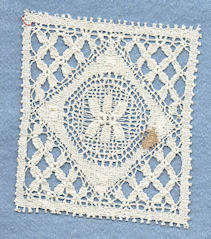

Machine lace matThis is an imitation of a bobbin lace mat, but various parts are made in a different way, which shows that this is machine lace. Scroll to bottom of page for further explanation (or click here). |  |
 |
 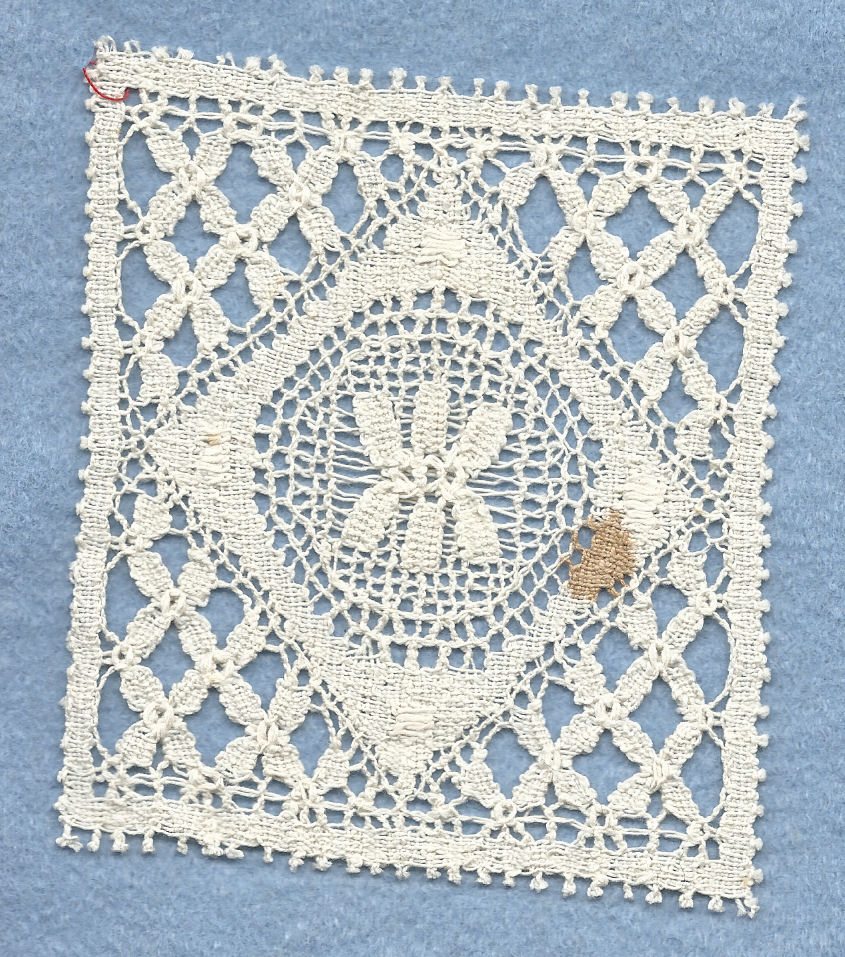

|  |
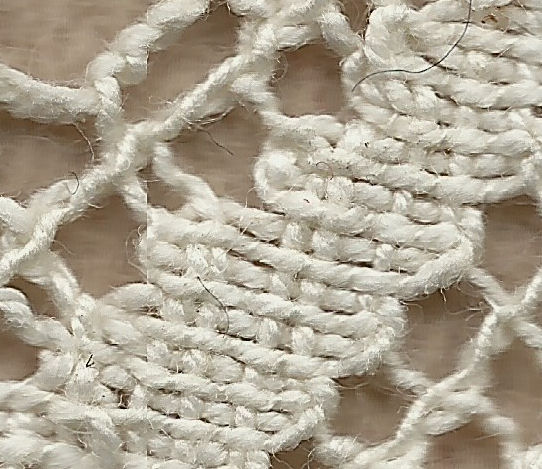 |
This looks like a strip of cloth stitch called a cloth stitch trail in bobbin lace. The workers and passives are the same thickness, and there are a pair of workers for one row - all similar to bobbin lace. However, there is one difference. If you look closely at a row, you can see that a pair of passive threads go over and under together. However, even worse, a worker thread seems to go over all passive threads, while the next goes under them all. That is just impossible - the whole piece of lace would fall apart. In fact, there are very thin threads, just detectable in some places, which go over the worker while the passives go under, and vice versa. Another clue that all is not as it should be is that we are getting single threads leaving and joining the lace. Click here for the whole piece of lace. |
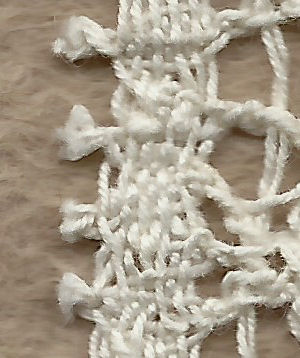 |
This is an attempt to reproduce the effect of picots at the edge of the lace. In fact, the threads are just cut here. The machine makes a piece of lace with multiple mats across it. After this is made, the individual mats are cut out. This leaves the cut threads showing, but luckily this looks like picots! For an example of a different piece of lace before it's been cut, click here. |
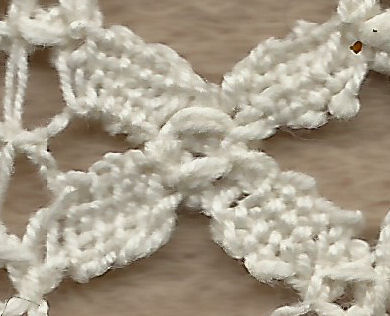 |
These are quite impressive tallies, with a single worker thread, but look carefully, and you will see more than three passive threads. In fact, there are also extra very thin passive threads, holding the thicker threads together. The join between the tallies looks odd as well. |